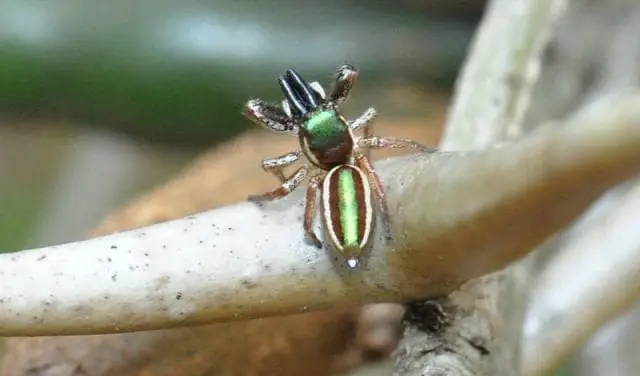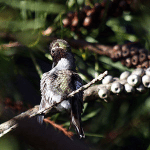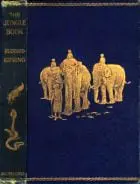
Remember the panther in the Jungle Book who was always worrying about Mowgli? Turns out, he has a spider named after him. This jumping spider lives in Central America and Mexico. It was given the full name of Bagheera Kiplingi after the author of the book as well.
The Bagheera was first classified in 1896 just two years after the Jungle Book came out, so I think the scientists had a case of fiction fever. Sure seems that way since they named 3 other jumping spiders after characters in the book, too! The funny thing is, unlike many other jumping spiders, the Bagheera isn’t black, it’s brown/green/red depending on if its a mom or dad.
Now, I’m going to tell you something about jumping spiders in general before I get to the Bagheera. Several years ago, our family moved into a home smack in the middle of a pasture. My husband had the delightful job of dealing with the mouse trap every morning in the Fall, and I got to take care of the Summer flies.
It didn’t take long for me to notice my little, beady-eyed helpers. The first Summer, before I knew much about jumping spiders, it was startling to get down a toy for the little ones and find a fuzzy white patch on the bottom. Once, there was even something dark inside that I figured was an egg sack (from reading Charlotte’s Web). It was as surprising for me as it was for the poor spider when I tried to wipe off it’s nest with a paper towel!
The thing I soon realized was that these spiders are very smart, alert, and harmless to people. We never got bit, even when one had moved into a seldom used coat or bed corner. By the last year we lived there, I didn’t kill my fly-eating house guests unless they started dropping down on us from the ceiling. That was just too much when I had babies! Besides, they were so smart, you had to be quick and sly to catch them before they found a hiding place.
I respected them and they respected me.
Now, the Bagheera Spider is smart and quick, too, but wouldn’t have been any help to me in my quest for a fly-less house. Why? Because the Bagheera is the first spider we’ve studied that eats mostly plants!
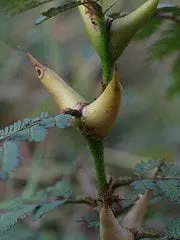
The swollen-thorn acacia tree of Central America has long been known as an ant feeding specialist. We’ve known about the symbiotic relationship [where both organisms help the other survive], between those two for over 50 years.
The acacia has been designed with two special things to attract ants: fat thorns that the ants hollow out to live in, and special leaflet tips, called Beltian Bodies, that are an excellent food for the ants. In return, the ants protect the tree from other plant eaters by stinging and fighting all comers.
The Beltian Bodies are really amazing. They are full of proteins and fats which provide most of the nutrients the ants need to grow and live their busy lives.
Well, we now know the ants aren’t the only ones to enjoy the benefits of these leaf tip bundles. It was just back in 2001 that modern scientists noticed there was something else taking advantage of this food source that can’t run away.
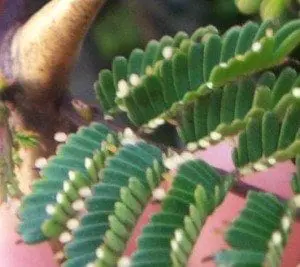
Because the Bagheeras are so smart, have good eyesight, and are quick, they manage to avoid the stinging guardians of the acacia trees. Half-a-centimeter long Bagheera spiders make their nests in older, unguarded leaves. When they get hungry, they search out the clearest path to the leaf tips, jumping over the guarding ants to grab a bite and race back to the branches the ants don’t defend.
Bagheeras are never completely vegetarian. Some populations are just like other spiders: full carnivores. Costa Rican Bagheeras eat about equal amount bugs and plants, while their Mexican cousins get about 10% of their diet from bugs. They will help themselves to things like ant larvae if they get a chance (and even turn cannibal if they’re starving), but studies of their body makeup show that almost all of it is made from the acacia’s ingredients.
Another interesting thing that I found out is that Daddy Bagheeras are the only known spiders to help care for the eggs and babies. My thought is that they don’t usually have to worry about Mom eating them for lunch, so it’s safe to hang around!
And to every beast of the earth, and to every fowl of the air, and to every thing that creepeth upon the earth, wherein there is life, I have given every green herb for meat: and it was so. And God saw every thing that he had made, and, behold, it was very good. And the evening and the morning were the sixth day. Genesis 1:30,31
I got the idea for this from Creation.com: The Vegetarian Spider

